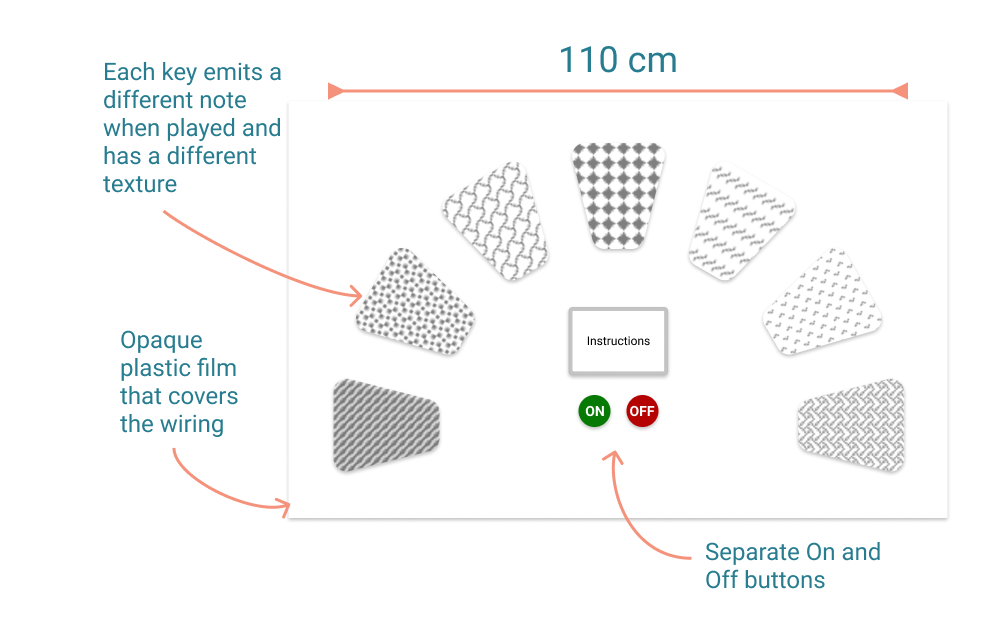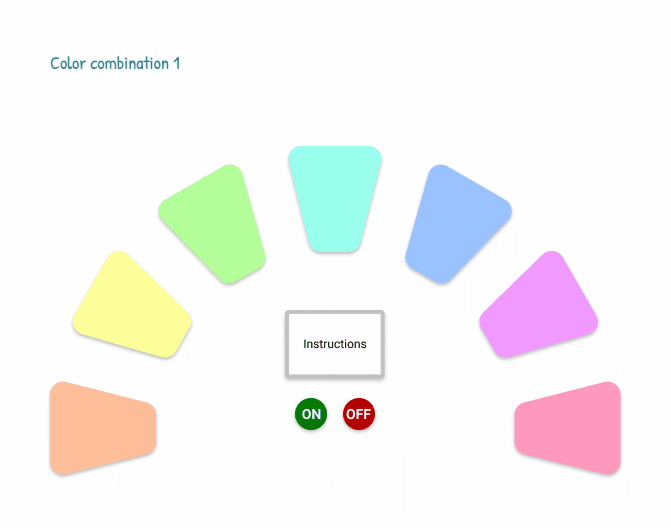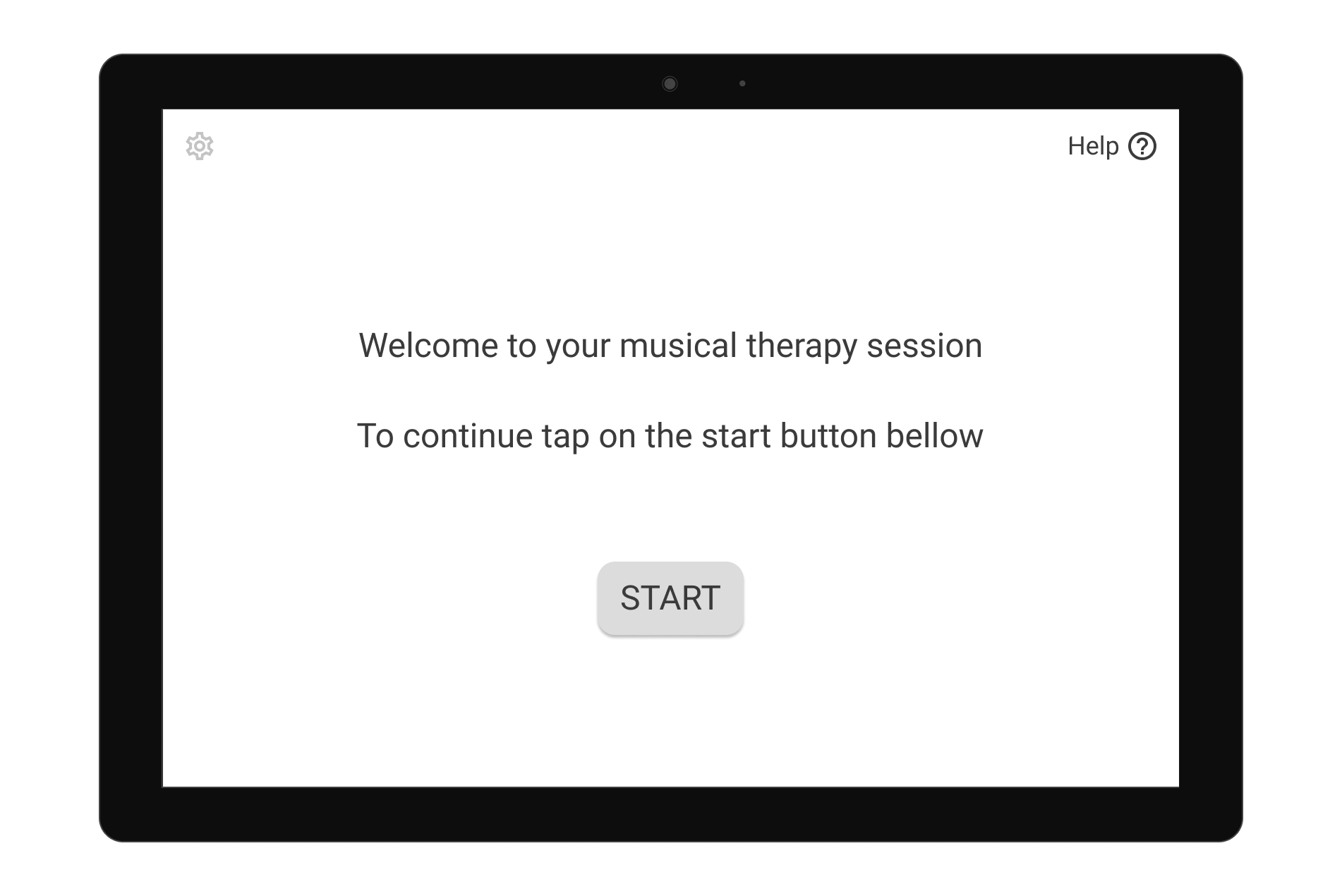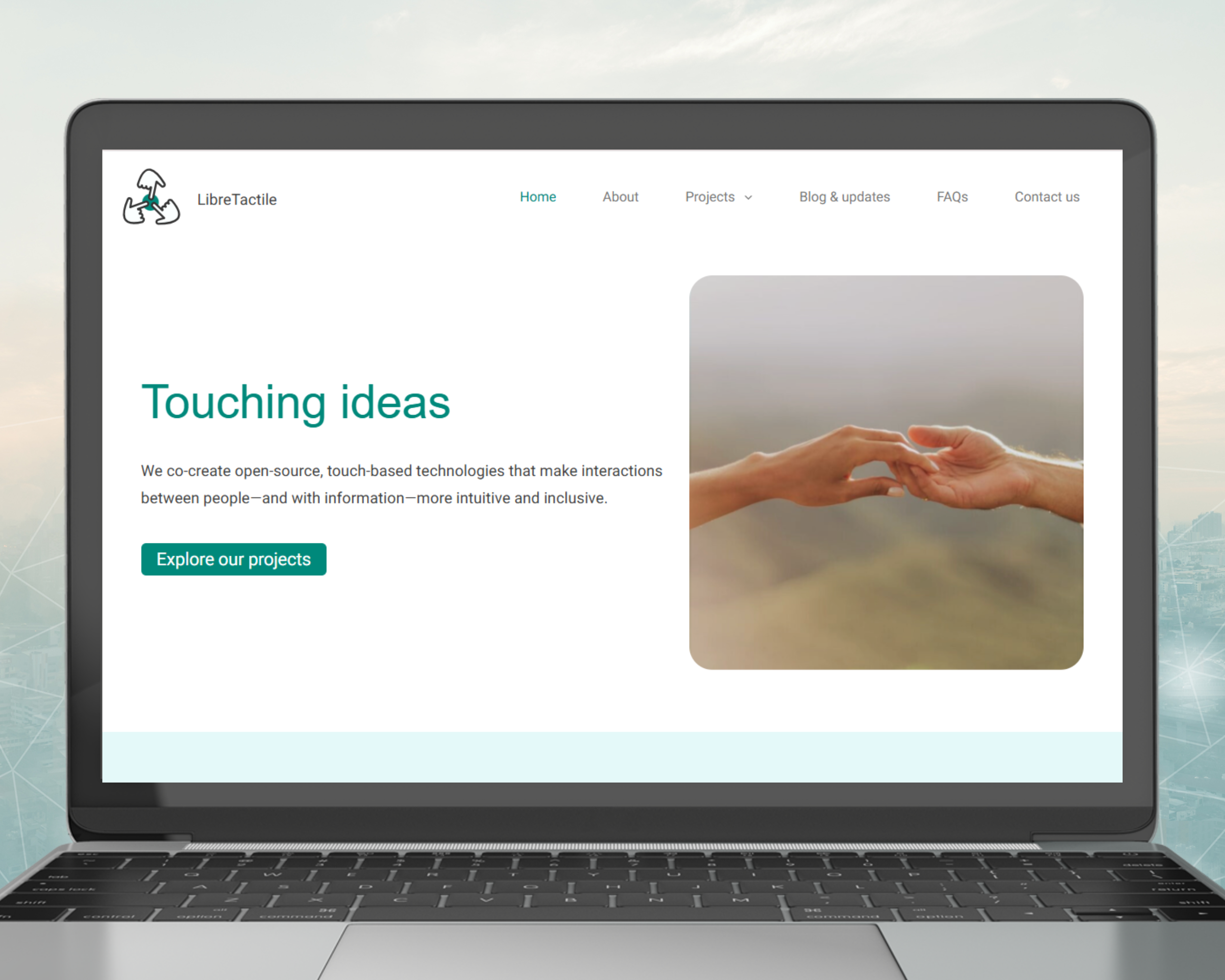Musical keyboard co-design
UX research • Inclusive design • Project leadership
About the project
Designing WITH Alzheimer’s communities
We created an intuitive musical interface enabling people with mild Alzheimer’s to participate in independent music therapy—turning scientific research into tangible empowerment.
The approach

The process
1. Getting to know our users
I started by conducting interviews with three key groups: healthcare professionals, dementia experts, and individuals living with mild Alzheimer’s. To build a complete picture, I immersed myself in research – analyzing scientific articles, watching patient videos, reading caregiver blogs, and participating in online communities. This dual approach of direct conversations and secondary research helped me develop accurate personas that reflected real needs and abilities.
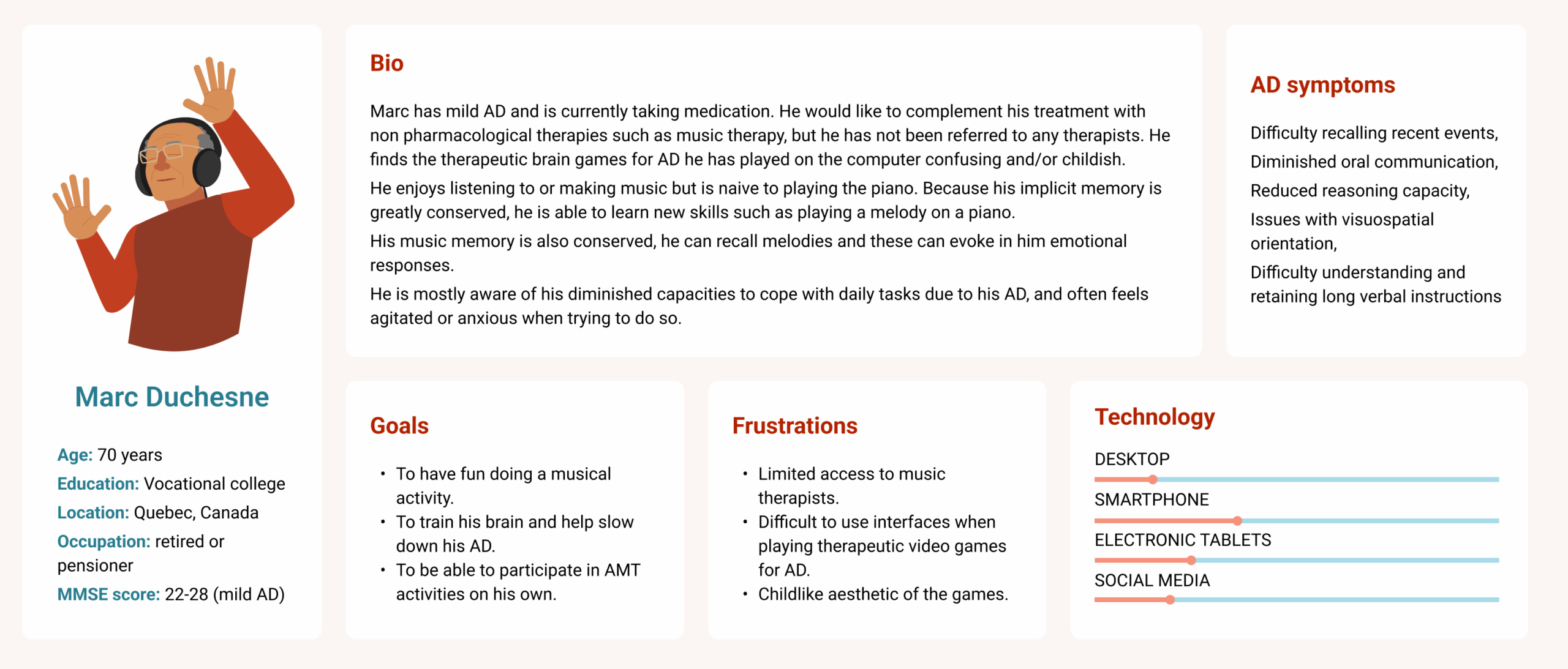
2. Exploring what’s already out there
My comprehensive literature review uncovered critical insights about autonomous Active Music Therapy (AMT) for Alzheimer’s patients. I identified existing solutions and gaps in electronic device design specifically for this population. These evidence-based findings became the foundation for our entire design approach, ensuring every decision was grounded in proven methods.
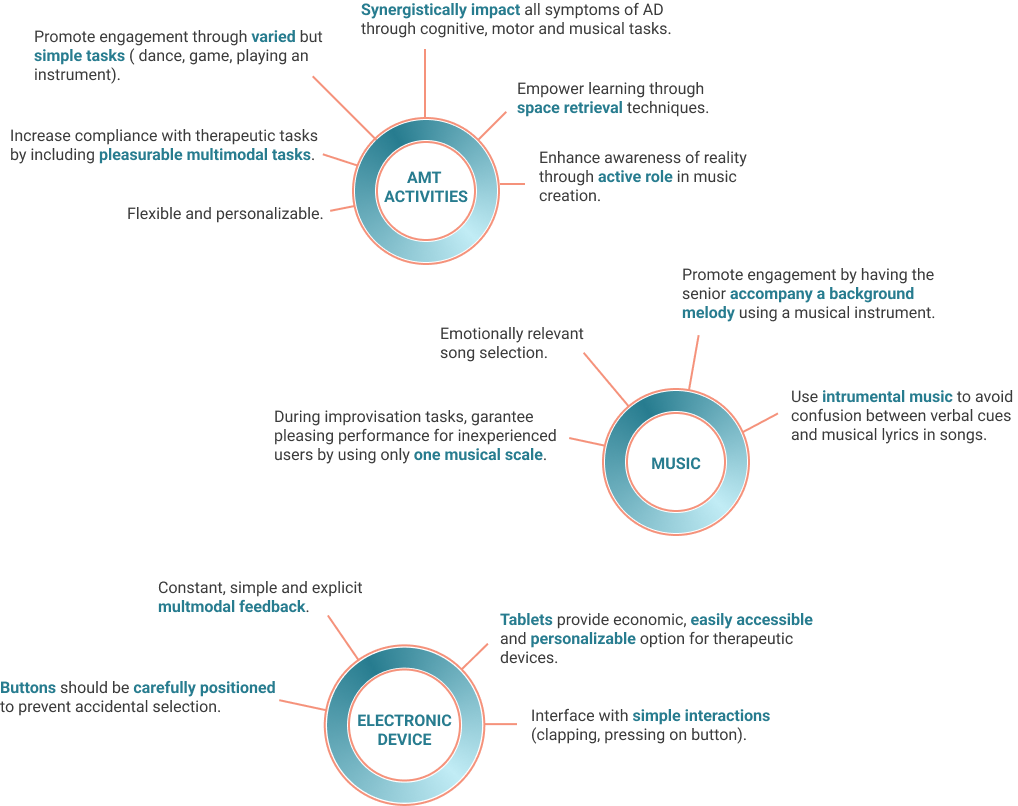
3. Ideation
Through collaborative team meetings, we explored the device’s potential together. I facilitated these sessions by presenting physical paper prototypes in different sizes, shapes and materials. These tangible examples sparked productive discussions about technical requirements, user experience priorities, and design constraints.
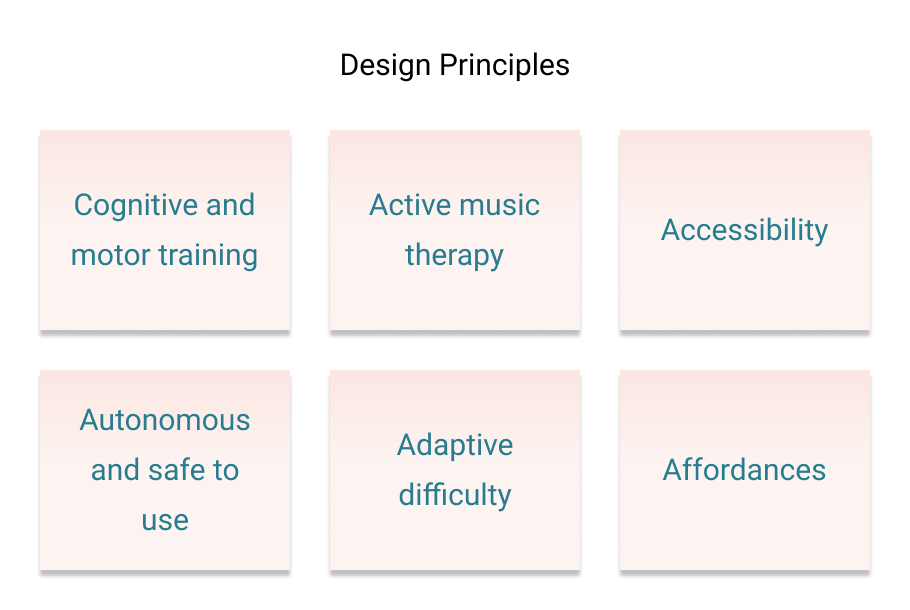
4. Design, test, iterate
Electronic device
We drew inspiration from traditional pianos, using the natural relationship between key position and tone frequency to create an intuitive layout. After research confirmed seniors’ engagement with piano-based activities, we developed two distinct key arrangements (“horizontal” and “inverted U”) for user testing.
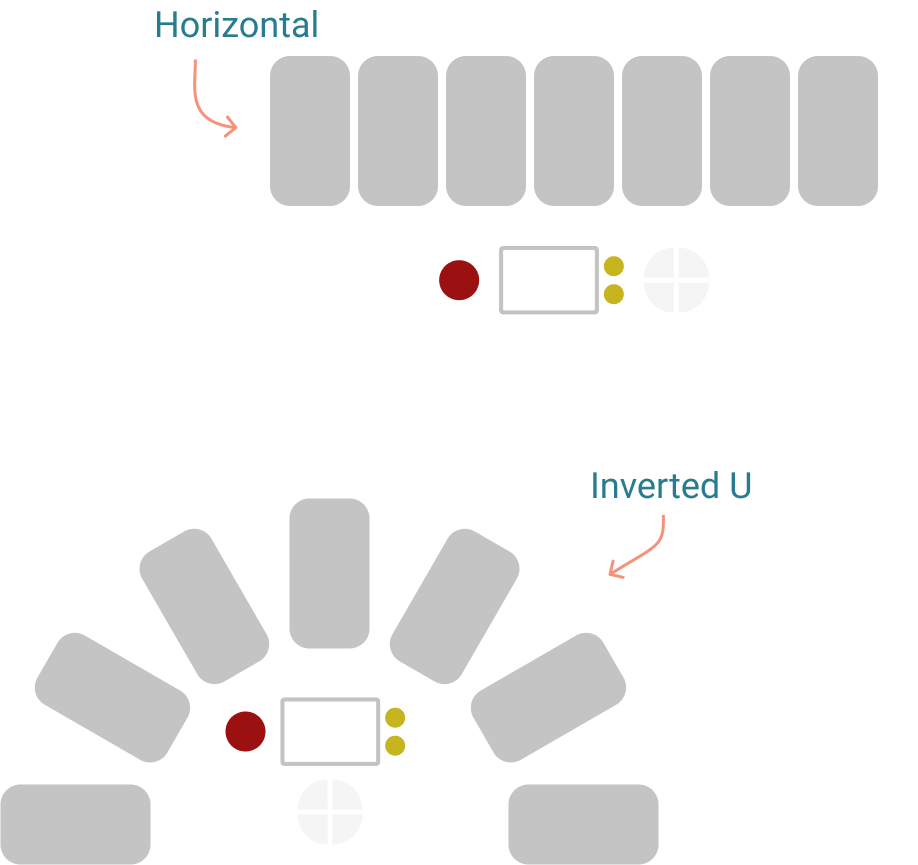
Therapeutic tasks
Our cognitive-motor exercises incorporated spaced retrieval techniques. Participants would listen to melodies, remember them, and then play them back – a process designed to strengthen working memory through musical interaction.
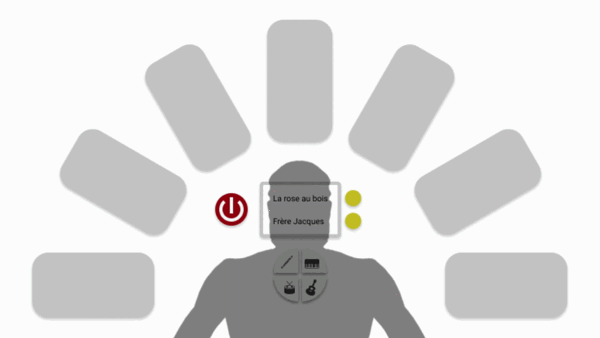
Individual co-design sessions
To learn more about users’ preferences and abilities, I conducted individual co-design sessions with four participants. During these sessions, participants interacted with paper prototypes and chose from different materials and melodies to modify the appearance and experience of the device. They also tested the spaced retrieval tasks through a video game on a tablet.
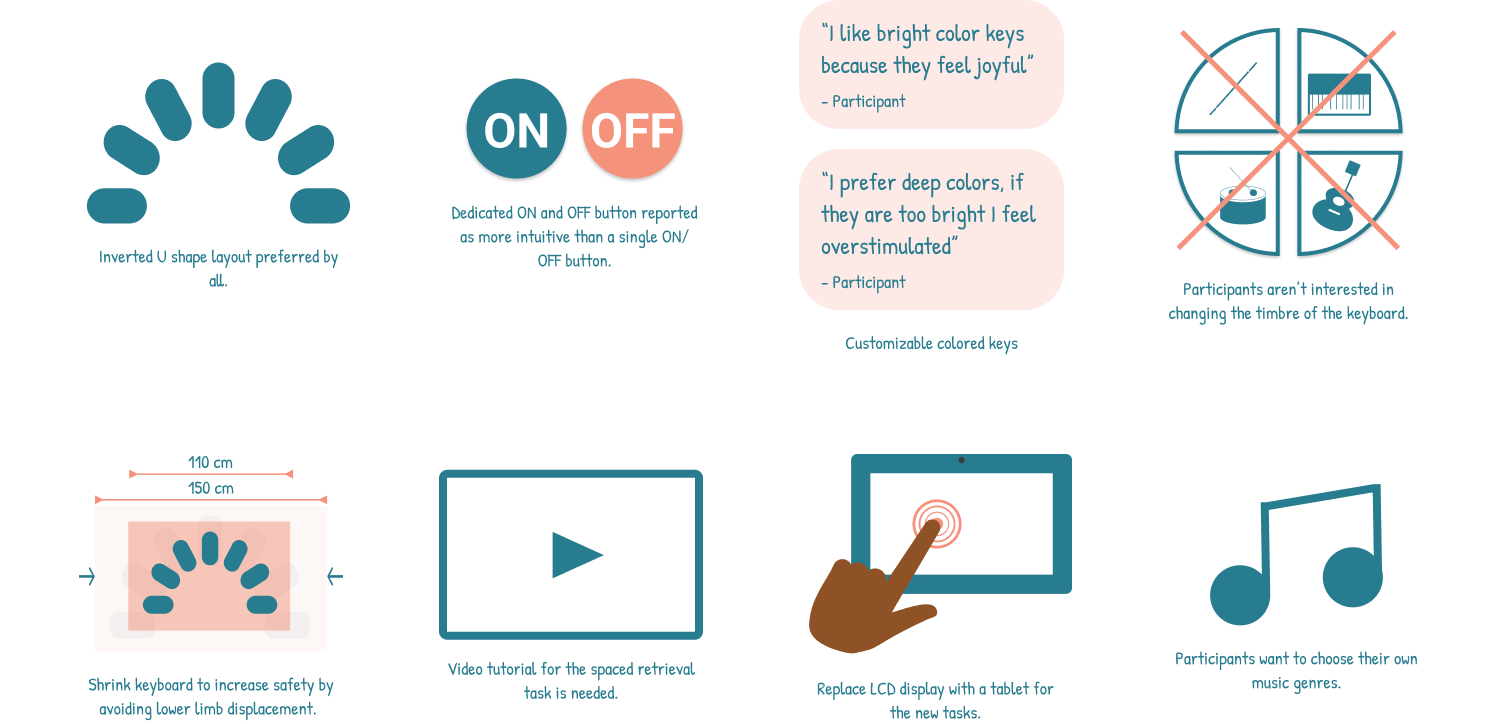
Prototype testing
I created a prototype app to test the difficulty of each task and evaluate the clarity, relevance, and modality of the instructions (graphic, text, audio). Participants were guided through the song selection phase and then tested the tasks developed in the co-design session directly on the tablet.

Sessions with caregivers and researchers
We validated our concepts through focus groups with seven multidisciplinary researchers (specializing in rehabilitation technology, dementia and neuroplasticity) and four caregivers. Their professional and personal perspectives helped refine both the device and its therapeutic applications.

Results
